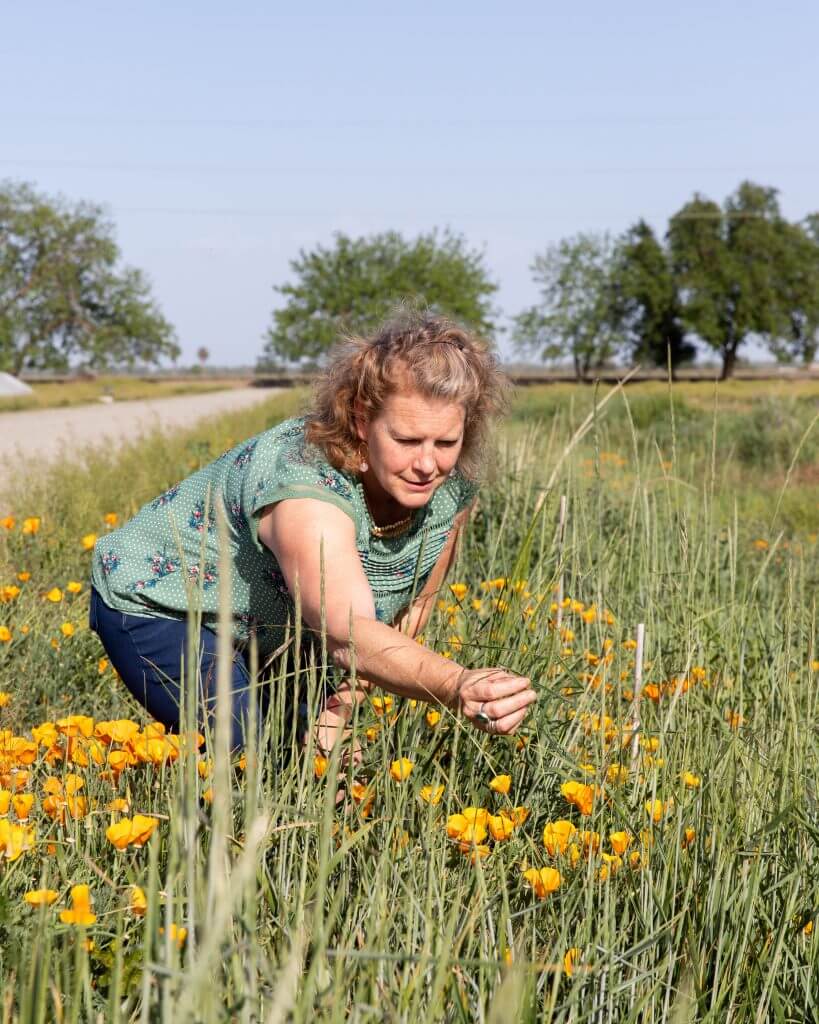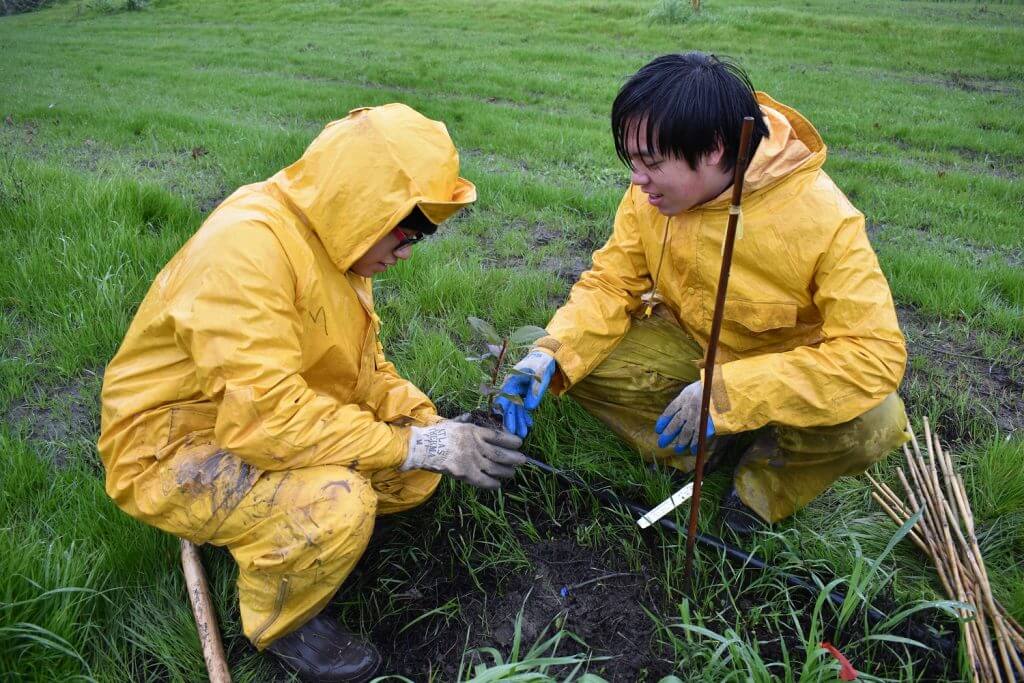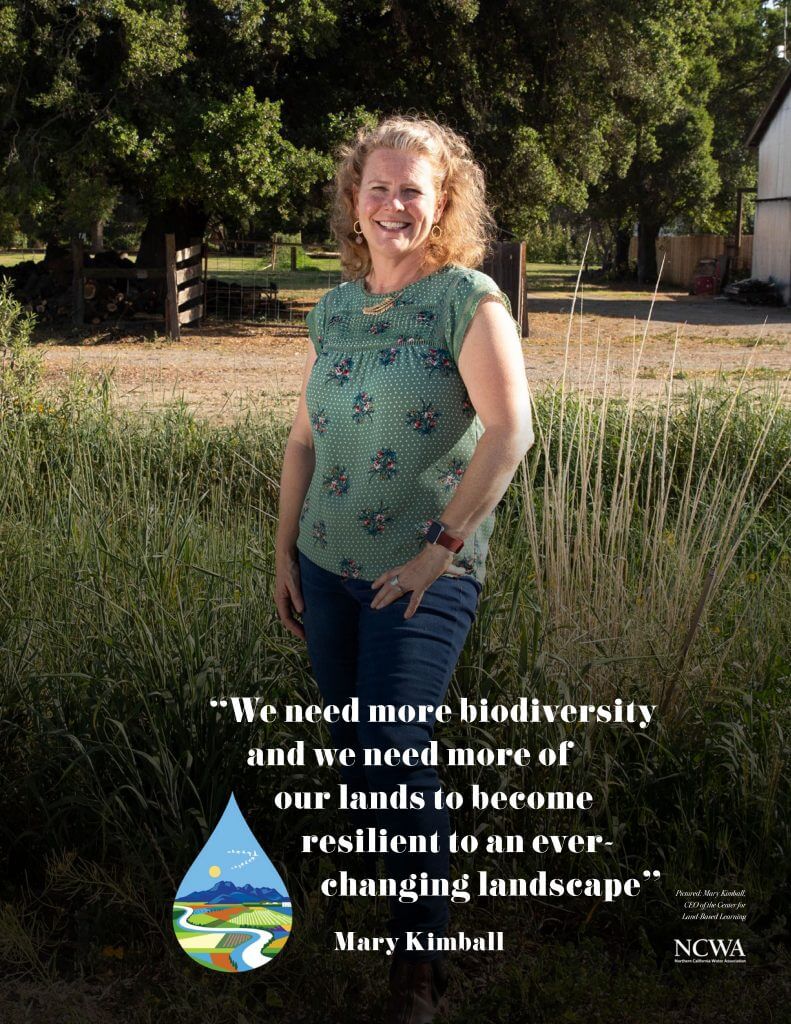
Much like a pinball, he was seemingly in constant motion whizzing from one side to the other. But, instead operating inside an arcade game, George Kimball was bouncing across Northern California in old Dodge truck delivering some of the best fruits, vegetables, eggs and meats Yolo County farmers had to offer.
George was a farmer himself, but it was just the way it was done back then. In the 1970s, the small farming community was truly a community, and they all banded together to help ensure Yolo-grown products made it into the hands of their valued customers. It left a lasting impression on George’s daughter, Mary.
 From a very young age she learned how all the pieces of the puzzle fit.
From a very young age she learned how all the pieces of the puzzle fit.
In 1998, Mary helped create the non-profit organization Center for Land-Based Learning, with its primary focus being to educate young people about sustainable agriculture and natural resource conservation through a hands-on approach.
Soon the Student and Landowner Education and Watershed Stewardship program or SLEWS was born. Mary began to solicit farmers about the possibilities of bringing high school students to their properties to assist with volunteer restoration projects.
Quickly, farmers found that the plants that were installed by the SLEWS students, with mentor support and oversight, actually performed better than those installed by labor crews.
The conservation community, who had experience in planting and management, was the missing piece, and together, Mary now had a perfect formula for success.

In the two decades since the SLEWS program began, high school students, farmers and conservation volunteers have planted 142 miles of riparian hedgerow habitat. That is the equivalent of driving from Sacramento to Reno. From the moment you left downtown until you pulled into the Biggest Little City in the World, accompanying you along the way would be a seemingly infinite line of native trees, grasses, shrubs, and flowering forbs all in a single row. Beyond hedgerows, they have installed buffer strips, plantings around tailwater ponds and riparian areas, erosion control projects, hundreds of thousands of feet of drip irrigation line and hundreds of bird nesting boxes.
Mary knows you don’t get there without collaborative effort from farms, students and the conservation community.
“There’s no shortage of opportunities, we need more biodiversity and we need more of our lands to become resilient to an ever- changing landscape.”
Mary still leads the Center for Land-Based Learning as the CEO, and also sits on the Yolo County Flood Control and Water Conservation District board.
It is in these roles she sees the importance of pairing solid programs with a collective mission to solve wildlife and environmental problems facing the county and beyond.
From the young girl who saw her father play a key role in the success of elevating Yolo County’s farmers, it is almost harder to believe that she wouldn’t have achieved what she had set out to do. Especially seeing as collaboration was the key to it all.
Listen to the podcast below.
Click below for more details.





